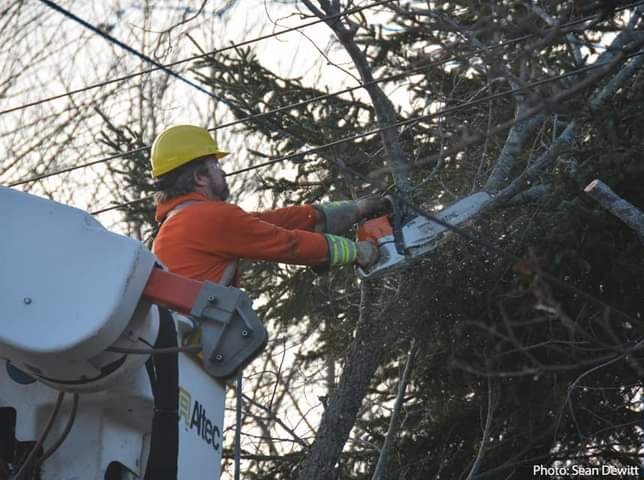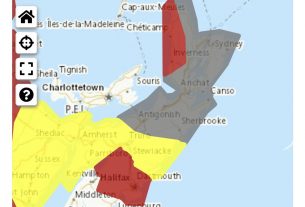**** NSP Media Release
Crews work through challenging conditions to restore power to customers
Nova Scotia Power crews are working to restore power to customers through a mix of freezing rain, snow and high winds that continue to hit the province.
“We have more than 500 people in the field responding to this storm, as well as hundreds more behind the scenes supporting this restoration work,” said Matt Drover, Nova Scotia Power’s Storm Lead. “Overnight, our crews experienced white out conditions, high winds and difficult travel conditions which prevented us from reaching some areas to restore power.”
Last night winds reached 90km/hr along the South Shore and Halifax. Winds exceeded 120 km/hr along the Eastern Shore. They are forecasted to be above warnings levels in the North East and Cape Breton later today. High winds and difficult travel conditions are expected to continue throughout the day.
Power line technicians, forestry teams, damage assessors and traffic control crews have been working through the storm overnight and continue this morning. As of 7am crews have safely restored power to over 25,000 customers.
“This is the second significant winter storm to hit Nova Scotia in a week and despite the challenging conditions, we are continuing to respond to outages as safely and as quickly as we can,” Drover said. “We encourage all of our customers to stay safe too. If you see any downed power lines please stay at least 20m away and call 911.”
Nova Scotia Power opened its Emergency Operations Centre (EOC) Friday ahead of the winter storm. The EOC provides a central place to coordinate planning for outage restoration and response. Nova Scotia Power is also working closely with the Nova Scotia Emergency Management Office.
Outage Information
Customers can report outages and get estimated restoration times online at outagemap.nspower.ca or by calling 1-877-428-6004.
Restoration Phases
Once the storm has passed, power is restored in a specific order, starting with any emergency safety concerns. It is then restored to the substations and main power lines that bring electricity from power plants to our communities. Critical services identified by the provincial EMO, like hospitals, police, fire, water and communications is next. Then crews move to power lines that will restore power to the greatest number of customers in the least amount of time (ie. high density buildings or neighbourhoods). Once these repairs are made, crews focus on smaller groups of customers and individuals.




